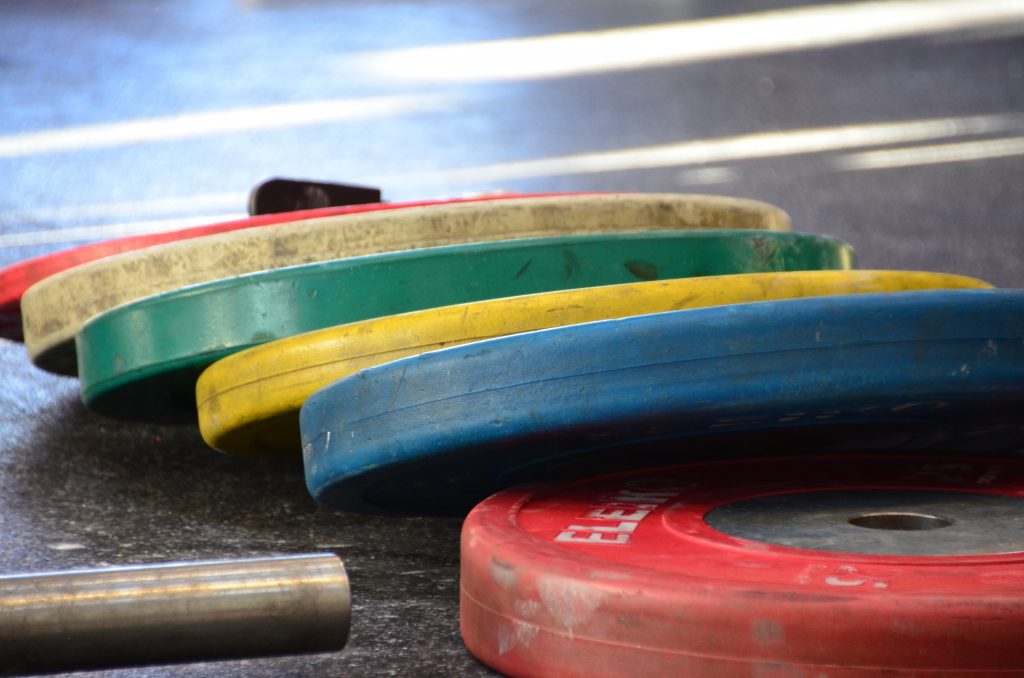3.5 Nutrition for Physical Activity
A healthy diet and proper intake of essential nutrients is critical for physical activity performance. This section will include a brief overview of the literature regarding the importance of adequate hydration and consumption of carbohydrates, proteins, and fats for optimal physical activity.
Hydration and Physical Activity
Daily water intake requirements are individualized to each person’s unique characteristics (i.e. body weight and sweat rate). However, general recommendations for daily water intake (assuming normal environmental temperatures and activity levels) for adults aged 19+ years have been set at 3.7 liters for males, and 2.7 liters for females (approximately 8-12 cups daily) (Williams, 1999). Gender differences in water intake requirements may be due to differences in body composition between males (water is approximately 60% of body weight) and females (water is approximately 50% of body weight) (Williams, 1999).
Dehydration in physical activity may be the result of insufficient fluid intake or excessive sweating during exercise. When the body water levels drop below normal percentages, dehydration may occur. Dehydration in physical activity often occurs in prolonged endurance events, and may be the result of insufficient fluid intake or excessive sweating during exercise. Warm or hot weather conditions may increase sweat rates to as high as 3-4 liters per hour (Williams, 1999). Consequences of dehydration include, but are not limited to: degradation in performance, physiologic strain, reductions in mental/cognitive performance, and gastrointestinal distress (Williams, 1999). Dehydration due to excessive sweating may also result in loss of major electrolytes (i.e., substances which conduct an electric current in the muscles and play an important role in activating enzymes and regulating metabolism) from the body. Electrolytes are often replenished during physical activity through the consumption of carbohydrate-electrolyte solutions, such as Gatorade.
The American College of Sports Medicine released a position stand on Exercise and Fluid Replacement in regards to water and electrolyte intake during physical activity (Sawka, et al., 2007). The guidelines recommend rehydration as the most effective technique to maintain water balance throughout exercise. Rehydration is a technique which focuses upon ingesting small volumes of fluids which are moderate in temperature, in order to avoid gastric emptying (excretion of the fluids). Intake of either water or carbohydrate-electrolyte during physical activity may improve performance; however, combining these fluids may be the more effective method in enhancing performance outcomes (Sawka, et al., 2007; Williams, 1999). Further information on fluid replacement and proper hydration for physical activity may be found by exploring the link below.
ACSM Position Stand: Exercise and Fluid Replacement
http://journals.lww.com/acsm-msse/Fulltext/2007/02000/Exercise_and_Fluid_Replacement.22.aspx
Comprehension check:
Do you believe your hydration needs vary on a daily basis? Why or why not? (Hint: does your physical activity level change on a daily basis?).

Energy Intake and Physical Activity
Appropriate intake of energy is vital in ensuring the body functions properly when at rest and during physical activity. A balanced intake of macronutrients may assist individuals in regulating a healthy body composition and achieving maximal physical activity outcomes (Thomas, Erdman, & Burke, 2016). Therefore, an understanding of the proper proportions for carbohydrates, proteins, and fats is essential. Acceptable macronutrient caloric proportions for the general population may be found by examining the chart, below (Manore, 2005).
Acceptable Macronutrient Distribution Ranges (AMDR):
| Macronutrient | AMDR |
|---|---|
| Carbohydrates | 45-65% of caloric intake |
| Fats | 20-35% of caloric intake |
| Proteins | 10-35% of caloric intake |
However, each individual must carefully consider their unique personal characteristics and current physical activity participation level when determining diet. The following text briefly describes the role carbohydrates, proteins, and fats play in fueling physical activity.
The body utilizes carbohydrates as a fuel for both anaerobic and aerobic exercise. Carbohydrates are essential for brain metabolism, and also serve as an excellent energy source for physical activity. Metabolic pathways for carbohydrates are very efficient, and the body utilizes carbohydrates as a fuel for both anaerobic (e.g., intermittent high-intensity exercises) and aerobic exercise (e.g., endurance races) (Williams, 1999). Carbohydrates may be consumed before, during, or after physical activity. Recommendations for athletes indicate that up to 50-60% of the diet may be derived from carbohydrates (Williams, 1999). However, adhering to a carbohydrate-rich diet may result in decreased intake of important macronutrients such as proteins or fats; therefore, monitoring and adapting dietary habits may be necessary.
Proteins are minimally utilized in the body as an energy source for physical activity (Williams, 1999). During endurance aerobic events, the body may switch from primarily using carbohydrates to proteins as a fuel source; this mechanism is hypothesized to preserve glucose for brain functions (Williams, 1999). It is crucial to note that protein is usually utilized as a fuel source only when carbohydrate and fat stores are depleted (i.e., starvation). The body is best served by preserving protein for essential functions (e.g., cell signaling, maintenance of muscle and cell structure, etc.).
Individuals who engage in weight-lifting activities often consume protein in an attempt to promote muscular gains (known as “hypertrophy”). It is recommended that the general population consume 0.8 grams of protein per kilogram body weight; however, strength training athletes may exceed this guideline. Current literature indicates that consuming approximately 20% of daily energy intake from proteins (or approximately 1.6-1.7 grams of protein per kilogram body weight) is sufficient for hypertrophy goals (Williams, 1999).

Fats provide a major source of energy for the body during lower intensity physical activites1 and when the body is at rest (i.e., sitting in class, sleeping, etc.). Chronic high-fat diets may impair endurance performance, and therefore it is recommended that athletes consume only 20-30% of daily energy intake from fats (Williams, 1999).
Further information describing the interplay between nutrition and physical activity is available within the ACSM’s position stand on Nutrition and Athletic Performance (link below).
ACSM Position Stand: Nutrition and Athletic Performance
http://journals.lww.com/acsm-msse/Fulltext/2016/03000/Nutrition_and_Athletic_Performance.25.aspx
Comprehension check:
Do you believe your daily energy intake needs vary on a daily basis? Why or why not? (Hint: does your physical activity level change on a daily basis?).
Works Cited
Manore, M. M. (2005). Exercise and the Institute of Medicine recommendations for nutrition. Current sports medicine reports, 4(4), 193-198.
Sawka, M. N., Burke, L. M., Eichner, E. R., Maughan, R. J., Montain, S. J., & Stachenfeld, N. S. (2007). American College of Sports Medicine position stand. Exercise and fluid replacement. Medicine and science in sports and exercise, 39(2), 377-390.
Thomas, D. T., Erdman, K. A., & Burke, L. M. (2016). American College of Sports Medicine Joint Position Statement. Nutrition and Athletic Performance. Medicine and science in sports and exercise, 48(3), 543.
Williams, M. H. (1999). Nutrition for health, fitness and sport (No. Ed. 5). WCB/McGraw-Hill.

